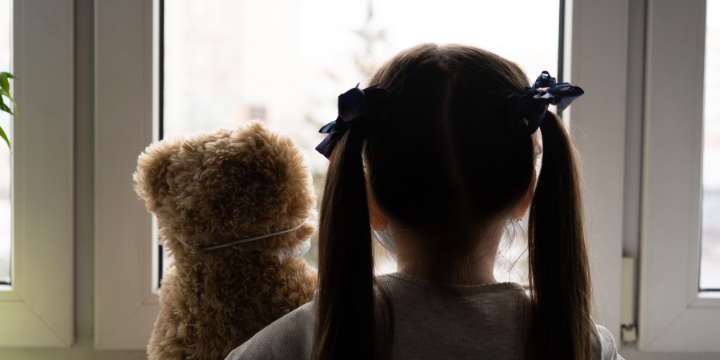During Children’s Grief Awareness Week, we’re posting a series of blogs from our counselling and clinical staff about how to support bereaved children. Here, Senior Staff Nurse, Simone, explains how our new Hospice will help support bereaved families.
“Children’s Grief Awareness Week (16-23 November) is designed to raise awareness of bereaved children and young people in the UK, and how providing those affected with free professional support can make the world of difference to their future. Here at Martlets, supporting families is a crucial part of the care we offer and that includes facilitating conversations between children and their loved ones about illness, grief and loss.
I am part of a team here at Martlets that ensures we’re providing the best provision we can for children and young people whose loved ones are in our care. It’s part of our role to ensure that the staff on our inpatient wards have the confidence and knowledge to offer this support and help them make time to have those important conversations.
We have just updated our leaflet What to say to children when someone they love is dying which you can read online or download and print (we also have printed copies at the Hospice). It provides a lot of useful information on how to talk to children of different ages about death, dying and loss, and explains some of the behaviours you might expect to see in these circumstances.
Ideally, it is a child’s primary carer, someone close to them whom they trust, that is the best person to share news about a loved one who is ill and dying. A lot of the questions and the deeper discussions about it aren’t going to come up in that first conversation, they’re going to come up later. So we want to equip primary carers, patients and family members with the confidence to continue talking about these topics when children ask questions down the line.
Supporting children and families at our new Hospice
It is important that people have space for those conversations whether at home or when they are with us at the Hospice. If I were an inpatient, I would want to be able to see my children interacting in a natural way when they visit; I think the new setup will really enable that. The new patient rooms will be more spacious and easier to relax in and are all ensuite. They also have bigger ‘cuddle beds’ and sofabeds to lounge on. This will avoid visitors having to crowd around the bed on chairs which could sometimes feel overwhelming for patients, and allow for more natural interaction. Children will have more freedom to either cuddle up in the bigger beds with their loved one, or to lounge on the sofabed.
We’ve also got the new family area where families can have a bit of time out of the patient room if they need to and feel comfortable. Once the furniture is in the family room we’ll see what space there is for toys and books, though obviously infection control is on our minds in COVID times. For teenagers we’re hoping to get a games console in there. Sometimes teenagers find it hard to make direct eye contact during difficult conversations, but if you’re sitting next to them and both doing an activity it’s easier for them to open up.
The new gardens at the Hospice will be set up to allow for family relationships to play out more naturally too. Obviously, it will take a little while for the gardens to grow and flourish, but in time these outdoor spaces will be so important again.
Martlets’ Family Days
Pre-COVID we had a Family Day once a year when bereaved families could come together for facilitated sessions with our counsellors. I’m hoping that can happen again once we’re settled in the new Hospice, as it was a great way for children to meet other bereaved kids and to know they’re not alone.
We would talk about what it’s like lose someone and we do a lot of memory work, art projects and so on. It was lovely because you would meet children whose loved ones you’d cared for a year or two previously and see how they’d grown and that they were okay. We could see that they’d had the support they needed to cope with their grief. They were remembering the person that they lost, but also living normal, happy lives as well. That was so good to see.
The children talk to each other and it helps them realise they are not alone in their experience of grief. This Family Day connects them with other kids who’ve lost a parent and they realise they’re not alone and there’s a strength and reassurance in that. We’ll let you know when we organise another Family Day. In the meantime, do check out these links below to other blogs written by my Martlets colleagues and also to the Child Bereavement Network.”
For further information, please visit:
Living with Loss – supporting bereaved children
Talking to children about illness and end of life
Published 14/11/2023

